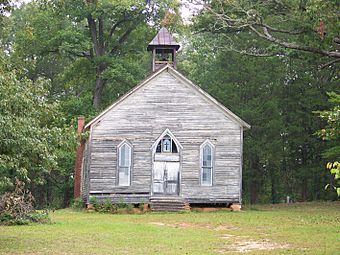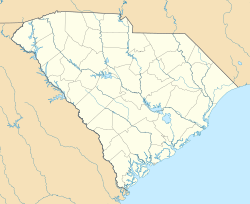Mulberry Chapel Methodist Church facts for kids
Quick facts for kids |
|
|
Mulberry Chapel Methodist Church
|
|
 |
|
| Location | 538 Asbury Rd., near Pacolet, South Carolina |
|---|---|
| Area | 2 acres (0.81 ha) |
| Built | 1880 |
| Architectural style | Gothic Revival |
| NRHP reference No. | 12000370 |
| Added to NRHP | June 27, 2012 |
Mulberry Chapel Methodist Church is an old and important church building located near Pacolet, South Carolina. It is also known as Mulberry Chapel Methodist Episcopal Church or simply Mulberry Chapel. This historic church is a special place for the Methodist faith. It was built around 1880.
The church building is a single-story structure. It was designed in a simple Gothic Revival style. This style was popular for churches at the time. Mulberry Chapel is one of the few African-American churches in South Carolina that are still standing from the years right after the American Civil War. This makes it a very important historical site.
Contents
A Look at the Church and Grounds
The church property covers about 2 acres of land. Besides the church building itself, there is also a cemetery here.
The Historic Cemetery
The cemetery at Mulberry Chapel has many graves. About 20 of these graves have headstones. There are also more than 20 other graves that do not have markers. The oldest headstones in the cemetery date back to 1888. The newest ones are from the 1960s.
Samuel Nuckles' Grave
One of the most important people buried in this cemetery is Samuel Nuckles. He was a former slave who became a leader. After the Civil War, he played a big role in South Carolina's government.
Samuel Nuckles was part of the 1868 Constitutional Convention. This was a meeting where leaders wrote a new set of rules for the state. He also represented Union County in the South Carolina House of Representatives. This was during a time called Reconstruction, from 1868 to 1872. He helped make important decisions for the state during this period.
National Recognition
Because of its history and importance, Mulberry Chapel Methodist Church was added to the National Register of Historic Places on June 27, 2012. This listing helps protect the church and its history for future generations.
References



